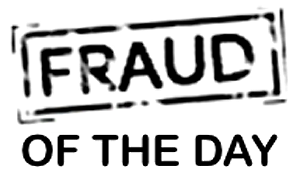For the next two weeks, we will be running a special blog series focusing on the Top 10 Fraud Trends of 2022.
Convicted bank robber Willie Sutton is best known for his response to the question, “Why do you rob banks?”
“Because that’s where the money is,” he replied.
More than 70 years later, fraudsters still go to where the money is, however, it has shifted from being in the banks to being doled out by Uncle Sam.
The amount of money that is collected, held, and redistributed at the federal, state, and local levels is unprecedented. Trillions of dollars are quickly and electronically distributed to help citizens in need. While this is great for those who qualify and truly deserve this financial assistance, it also creates an environment ripe for fraud, waste, and abuse. And let’s not forget the antiquated systems, which literally date back to the 1970s. That’s like having a giant piggy bank with almost no safeguards. (Remember that Dire Straits song about getting your money for nothing?)
For instance, the pandemic relief funds regarding unemployment. The damage is still being tabulated, but so far, the U.S. Secret Service has announced that approximately $100 billion has been stolen from COVID-19 relief programs designed to help individuals and businesses harmed by the pandemic. (No doubt these funds attracted the attention of nefarious individuals and organized crime networks around the world.) The Secret Service also says that the bulk of the potentially misused funds are tied to unemployment insurance.
Given that the numbers related to COVID-19 fraud are huge, it will likely take another year to truly tabulate the total cost. I anticipate the fraud related to pandemic relief funds will come in at or above $300 billion, just for national unemployment. Now that it has become obvious that state level unemployment systems are woefully outdated and outclassed by the fraudsters, upgrades are in the works. That means it is time for fraudsters to shift gears and move on to greener pastures. (And isn’t that just so appropriate since fraudsters are such opportunists? They’ll never by-pass a chance to get free money. Ever.)
Where will these fraudsters go to enact their encore performance, you ask? Well, obviously to other government agencies that are not paying attention, are unprepared, or have a low threshold of security. Because, as we know, fraudsters really don’t like to work too hard. They realize that a high ROI vs. minimal labor input is crucial. (Seriously. They’re just plain lazy.)
Here are the top areas that I predict we will see fraud shift to as unemployment tightens its verification processes:
- Student loan fraud
- Unclaimed property fraud
- Business ID theft and fraud
- Medicare/Medicaid fraud
- Vehicle title fraud
- ID Theft including DMV fraud and document fraud (licenses, birth certificates, etc.)
- Housing and rental assistance fraud
- Tax refund fraud
- Social Security and retirement fraud
- Workers’ compensation fraud
Join us over the next two weeks as we take an in-depth look at each of the Top 10 Fraud Trends in 2022, and learn how you can prevent becoming a victim.




